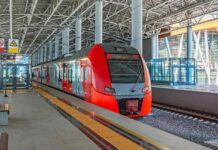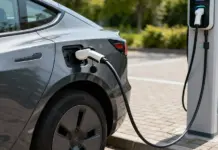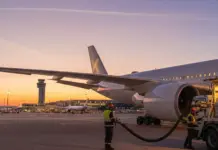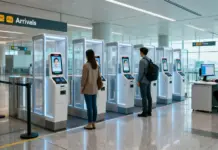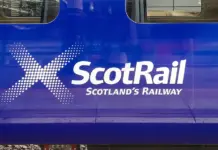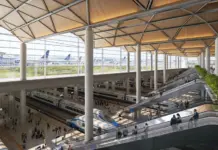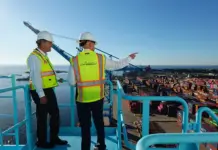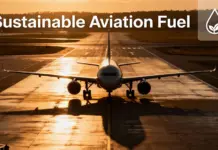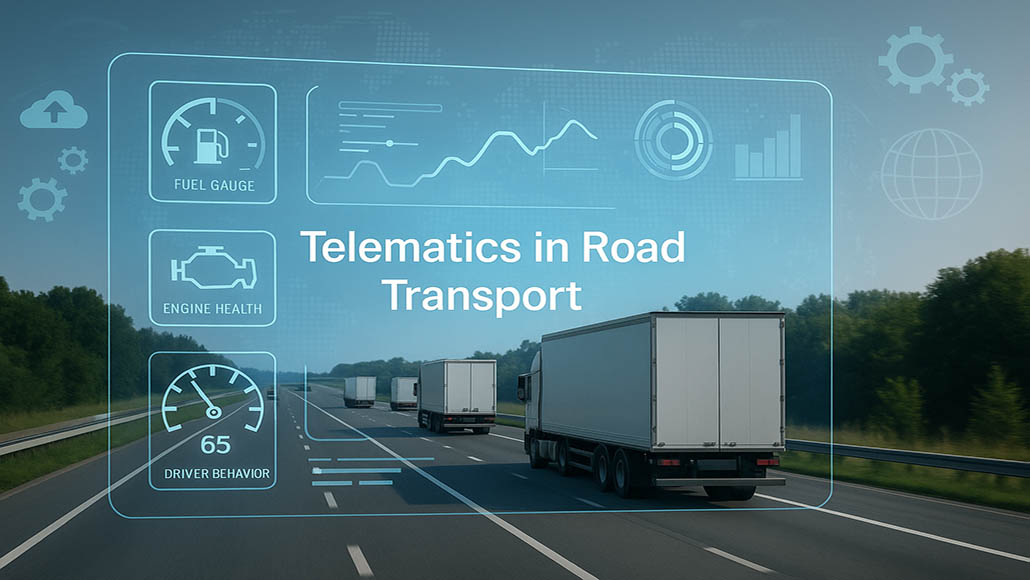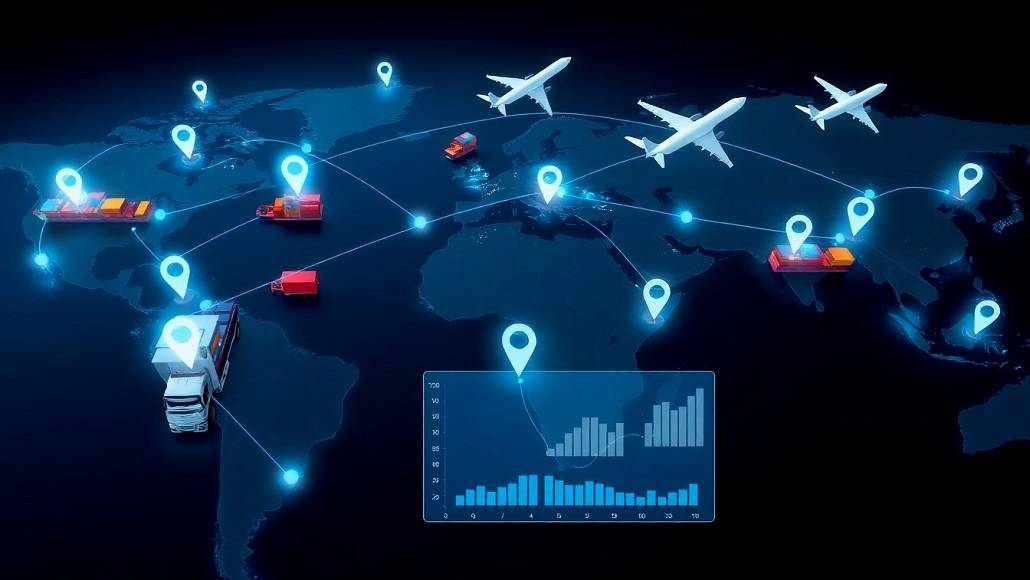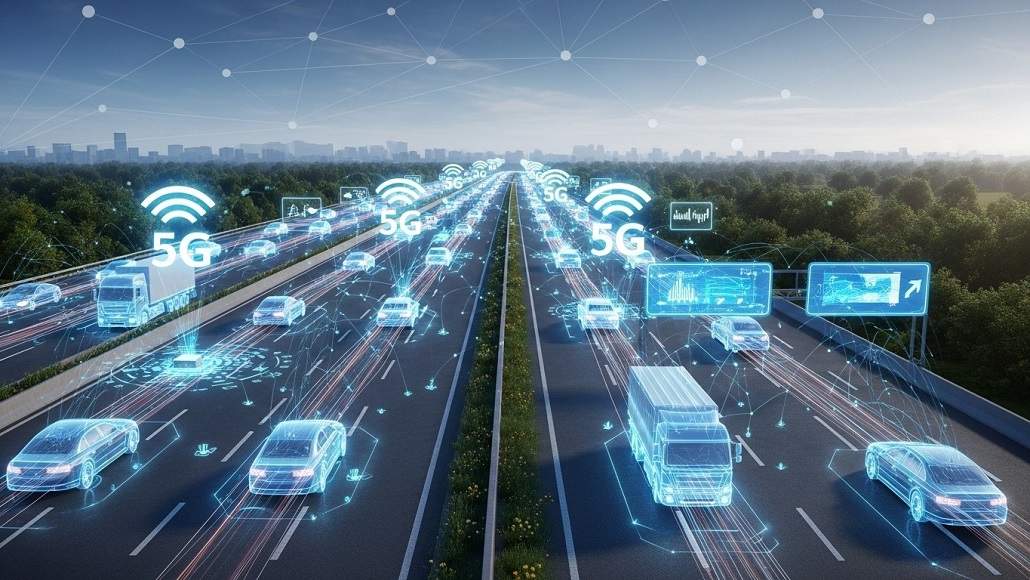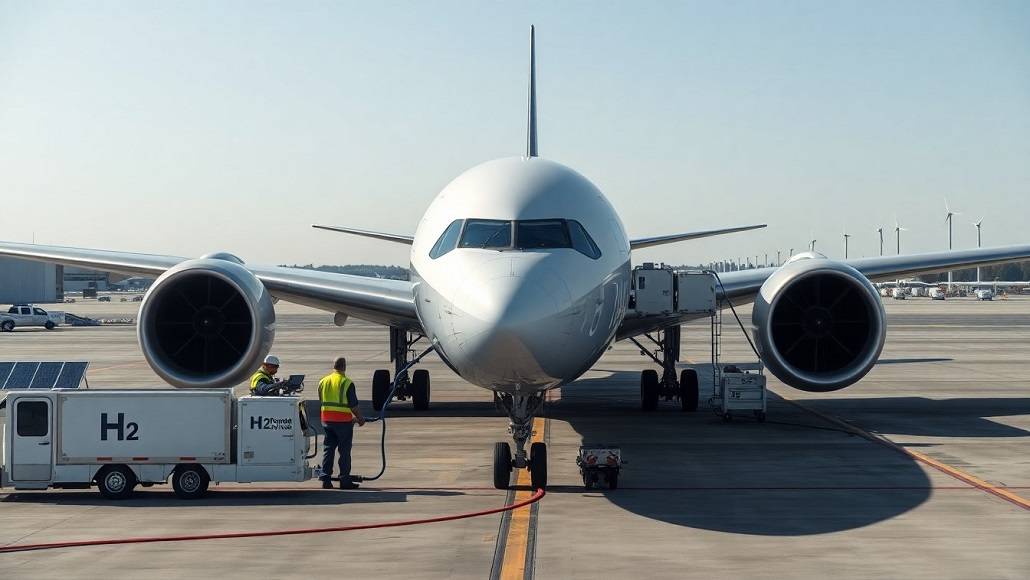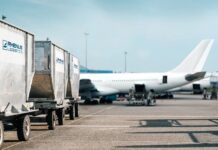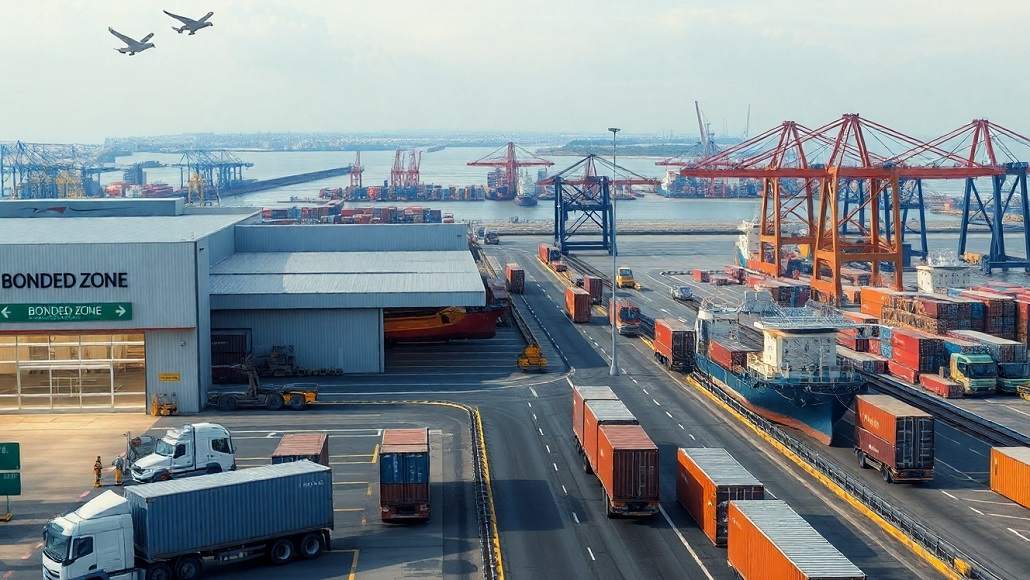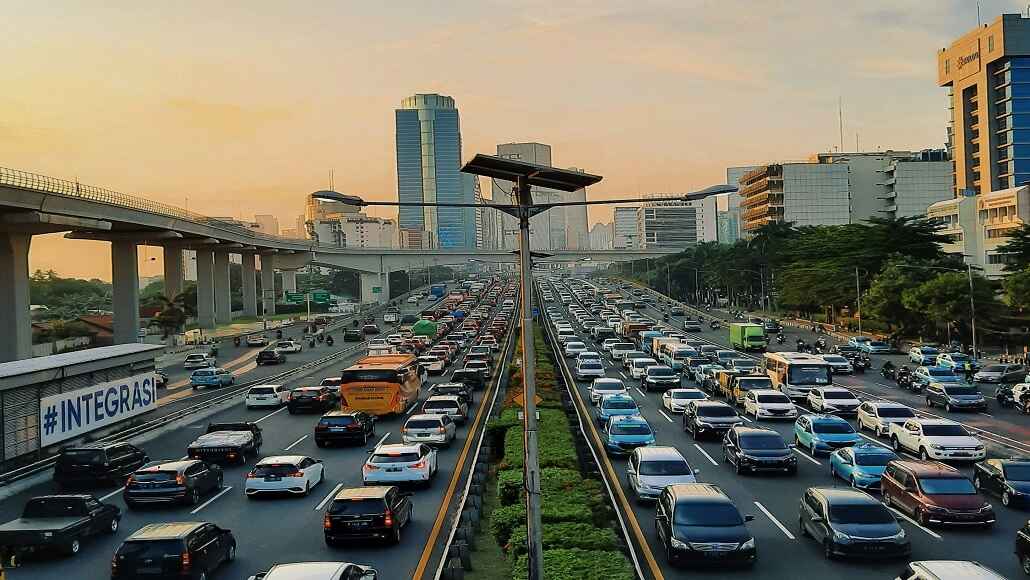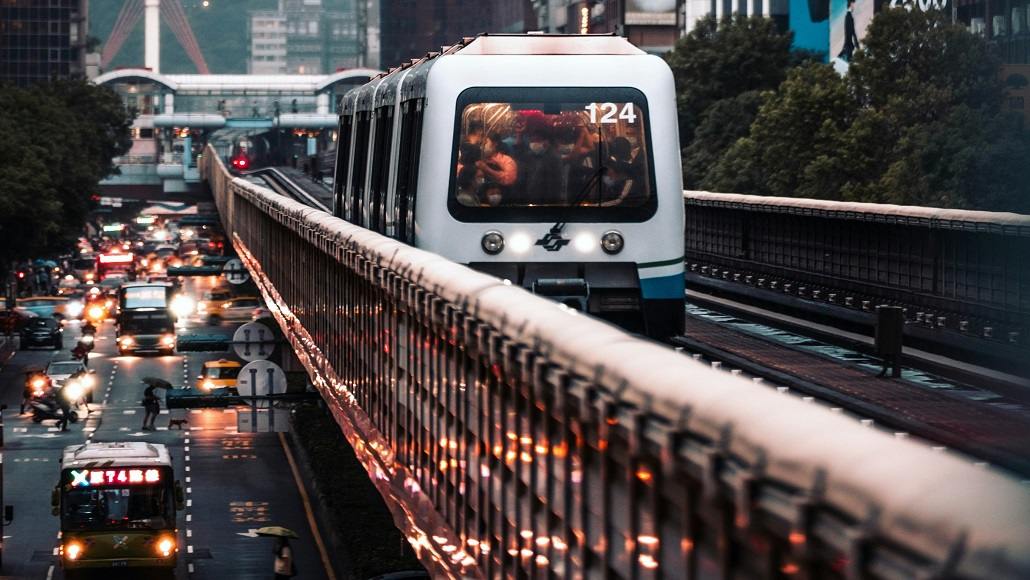Just picture a highway where self-driving trucks just zoom past, drones buzz past your overhead dropping off your packages, and electric cars slide away without even making a sound. That’s the future of transportation, and it is speeding towards us much faster than one can imagine. The transportation industry is changing rapidly and is fuelled by new technology, shifting consumer wants, and novel rules that are completely shaking up how we want to move stuff and people around.
Let us drive into the exciting forces that are shaping our roads, skies, and railways along with seas in the next few years. In the following article, we unlock the innovations that are sparking the transportation trends in 2025 and also what’s ahead of the sector. Especially when we consider the entire sector is growing steadily and it’s going to be valued at a massive $18 trillion in the near future.
Trend 1
Welcoming the technological advancements
Technology happens to play a very critical role when it comes to modernizing the transportation sector, thereby helping the companies to elevate efficiency and at the same time decrease their operational cost. Businesses are increasingly investing in digital tools like autonomous vehicles, artificial intelligence, and the internet of things, which have now become a standard across the sector.
Autonomous vehicles, along with advanced telematics
It is well to be noted that autonomous vehicles are pushing the boundaries when it comes to innovation and transportation trends in 2025. There are leading car manufacturers and technology companies that are developing self-driving cars and trucks and making use of sensor technology along with AI in order to navigate roads autonomously. These kinds of vehicles look forward to minimizing any kind of human error, enhancing safety, and also optimizing their fuel efficiency.
As per the National Highway Traffic Safety Administration (NHTSA), self-driving cars happen to have the potential to decrease traffic accidents by almost 90%. The global autonomous vehicle market is anticipated to touch $65 billion by 2027, thereby reflecting unmatched investments coming from industry leaders, such as Waymo and Tesla. These kinds of advancements promise not just safer roads but, at the same time, decreased fuel consumption along with route planning that’s optimized.
It is well to be noted that telematics has also emerged as a principal tool in terms of fleet management. By way of offering real-time tracking, companies can track vehicle locations, driver behavior, and performance metrics, which include speed as well as oil consumption. Sensors go on to collect this data, which is then evaluated by way of using advanced analytics in order to predict any kind of maintenance requirements. This proactive approach decreases the downtime and makes sure of a smoother fleet operation. As per a study done by Verizon Connect, telematics can dip the fuel consumption by almost 15% and the cost of maintenance by 14%.
Blockchain and IoT integration
It is worth noting that blockchain technology is getting adopted to elevate transparency within the supply chain. By way of offering an immutable ledger of transactions, blockchain tends to increase trust among the stakeholders. It helps in verifying the movement of goods and also decreases the fraud. This kind of application is specifically very important in sectors such as freight transportation as well as last-mile deliveries. Companies such as Maersk are already executing blockchain solutions in order to streamline their supply chains. In addition to blockchain, there is the internet of things. The IoT in the transportation sector experiences one of the fastest rises within the entire industry. These kinds of advancements are not just transport trends; they go on to represent evidence-based solutions that are assisted by facts and innovation. By way of integrating AI, telematics, blockchain, autonomous vehicles, and IoT in the transportation sector, it is well poised for being a more efficient and safe option.
Trend 2
Electrification along with sustainability
The drive for sustainability is now taking the spotlight in the transportation sector. Electric vehicles are indeed spearheading this movement.
As we all know, the worldwide transition away from fossil fuels is accelerating pretty fast. Both governments and consumers are calling for zero emissions and cleaner options.
Progress when it comes to electric vehicles
There is no shred of doubt that electric vehicles are now growing in popularity. Car manufacturers, along with fleet operators, are increasingly investing in EVs in order to comply with the strict emission regulations. Advancements when it comes to battery technology are making EVs more affordable and efficient. The charging infrastructure is fast expanding in order to meet this demand. As there are more drivers who adopt EVs, cities are indeed going to benefit from quieter streets and cleaner air. As per a report by BloombergNEF, electric vehicles are expected to comprise 50% of global passenger car sales by 2040, which is going to be driven by advancements within the battery technology and also supportive government strategies.
In addition to this, commercial fleets are also transitioning towards electrification. Companies are replacing the diesel trucks with other electric choices. This transition not just cuts the emissions, but at the same time it also decreases operational expenditures. Enhanced battery life along with faster charging times is pushing the transition. There are many industry experts who anticipate that electric commercial vehicles are going to become a standard by 2025.
Supply chain experiencing sustainable practices
The fact is that sustainability efforts go beyond vehicle emissions. They have in it the complete supply chain. There are companies that are rethinking logistic operations in order to decrease their waste. By way of optimizing roots to making use of eco-friendly packaging, every step is being analyzed for its environmental effect. These kinds of initiatives enable the reduction of the complete carbon footprint of the transportation industry trends for 2025.
The adoption rate when it comes to alternative fuels like biofuels and hydrogen is also growing. These fuels provide viable options in order to decrease dependence on traditional sources. With the research and development that is currently on, new fuel technologies are anticipated to play a very critical role when it comes to lowering their greenhouse gas emissions.
Trend 3
Last-mile delivery innovations
It is well to be noted that last-mile delivery remains one of the most challenging elements of logistics. It is the final step when goods are delivered to the customers, and it is both expensive and tricky. Fortunately, we have new technology that is tackling these kinds of barriers directly.
What are the efficiency gains in last-mile operations?
The growth in online shopping has made the last mile delivery a major challenge. Delivering a package straight to a customer’s door can comprise almost 50% of the total shipping cost. In order to solve this, companies are taking care of automation and crowdsourcing testing. For instance, they are trying to get into self-driving vehicles as well as drones in order to boost efficiency. These tools can move across swiftly throughout cities in a very smooth way and also speed up the delivery times. Apart from this, data analytics also make last-mile routes much better. Companies evaluate live traffic, delivery schedules, and weather in order to find their fastest way. This goes on slash the fuel use and also make sure that the package arrives on time. As a result, the customers tend to become more satisfied.
Defining the role of crowdsourcing as well as micro logistics
Crowdsourcing happens to be another clever solution when it comes to last-mile deliveries. There are platforms that connect freelance drivers with the delivery jobs, and hence this approach is indeed growing popular. It enables companies to adjust their operations based on how busy they happen to be. For example, in a crowded area, micro logistics, like using electric scooters, bikes, or even walking couriers, can get faster and cheaper.
All these new ideas happen to be a part of a larger trend in transportation and logistics that is indeed reshaping the sector. They enable companies to stay flexible and also meet the customer demands in this fast-moving market. By way of offering these technologies, transportation companies can decrease their costs and also lower their environmental footprint.
Trend 4
Data-driven decision-making along with digital transformation
Data happens to be the new fuel that is driving the transportation industry. The digital revolution has changed the way companies operate. Fleets, logistics networks, and warehouses now go on to produce massive amounts of data. This kind of data helps companies to make smarter decisions.
Real-time tracking in addition to predictive analytics
It is well to be noted that real-time tracking systems go on to deliver a steady flow of information. Technologies such as GPS, along with sensor track vehicle location, fuel levels, and also driver performance. This kind of data powers the predictive analytics tool, which anticipates maintenance problems for the event much before it takes place. Companies can thereafter schedule their repair much ahead of the time, thereby cutting the downtime as well as costs. The 2024 study found that real-time monitoring along with data and analytics can decrease delivery delays by almost 30% and also enhance route planning by 25%.
Besides, predictive analytics also enhances route optimization. By studying the past data and also present conditions, companies can find the fastest and most efficient route in terms of fuel use. This goes on to lower the cost and also prevents any kind of delays. For instance, algorithms can also suggest novel routes when it comes to traffic jams or even road closures that take place. One of the 2023 reports suggests that predictive analytics can decrease the transportation cost by almost 20% and boost efficiency by 15%.
Elevating the supply chain visibility
The fact is that data-driven decision-making brings transparency to any supply chain. Real-time data helps the companies in order to track their goods from manufacturers to consumers. This kind of visibility enhances the teamwork between supply chain partners, spots any sort of lacuna, and also turns the operations more seamless right from warehouse management to last mail delivery. There are many companies that are investing in transportation management systems (TMS). These kinds of systems mix the data from telematics, customer feedback, and sensors into one dashboard. This setup goes on to support fast, informed decisions. As there is a requirement for efficient and reliable logistics, which is growing by the day, these systems are going to be indeed very vital.
Trend 5
The growth of mobility as a service – MaaS
Mobility as a service – MaaS happens to be a concept that is reshaping urban transportation. MaaS goes on to integrate numerous modes of transportation into one accessible service. It happens to connect public transit, bike
sharing, ride hailing, and car rentals, thereby helping the users to plan, book, and also pay for their entire trip in just a matter of a few steps.
The multimodal transportation integration
MaaS happens to be simplifying getting around by way of linking numerous transportation modes. By way of real-time data on schedules, costs, and travel times, people can opt for the best option for their journey. This kind of seamless integration elevates convenience and also cuts down traffic. For example, one of the studies shows that MaaS can also decrease private car usage in cities by almost 30% by easing congestion and also making the streets less choked.
It is well to be noted that MaaS platforms not just improve the convenience, but at the same time, they also decrease congestion. Through offering choices to private vehicle ownership, these platforms help in lowering the emissions and, at the same time, offer a more sustainable urban environment. This innovation is indeed a very crucial component of trends within transportation. As it is going to get more connected, MaaS will surely play a very significant role when it comes to shaping how the people move around.
What are the economic as well as environmental benefits when it comes to MaaS?
Mobility as a service – MaaS happens to be transforming how people move in cities, thereby offering a much smarter and more connected way when it comes to travel. It is indeed a game changer for both businesses as well as consumers with advantages that extend even to the environment.
What it offers is –
Flexibility when it comes to users – MaaS goes on to offer a range of options – bike sharing, public transit, and ride hailing—thereby letting the users pick what works best for them in each trip, and hence there is no car ownership required.
Cost savings – Users go on to avoid any kind of expenses such as car maintenance or parking, while businesses can lower their costs by optimizing their services rather than managing large fleets.
Reducing the traffic – Lesser private cars on the road—helps in easing the congestion, cutting the travel times, and also making cities less crowded.
Lower emissions – Cities that adopt MaaS can also see transportation-related carbon emissions drop by almost 20% by the end of the decade by improving the air quality.
Livability, which is enhanced – less pollution as well as traffic—goes on to make the urban area a much cleaner, quieter, and more pleasant place to be.
As the cities become smarter, MaaS is all set to shape the transportation trends in 2025 and even beyond. It happens to be more than just travel. It is, in fact, a step towards cleaner, more efficient, and better urban living for everybody.
Trend 6
Workforce barrier and innovations
It is worth noting that the transportation sector is facing serious workforce challenges. First of all, there are not enough drivers, and there are many present drivers who are getting older. As a matter of fact, in the US alone there is a shortage of almost 80,000 truck drivers, as per the American Trucking Associations. This kind of shortage mixed with an aging workforce is making the problems worse by every minute. However, the new technology is helping in order to address this issue.
Taking care of the driver shortage
Transportation companies are indeed struggling to find qualified drivers. This kind of job is physically very demanding, and as drivers age, it kind of becomes very hard to keep up. In order to tackle this, companies are discovering automation as well as self-driving vehicles. Although fully self-driving trucks are not available as yet, there are partial automations that are already making a difference. Systems such as advanced driver assistance—ADAS—help drivers in order to stay alert and drive in a safer way.
Apart from this, companies are also updating their present training programs in order to attract young workers. They are making use of simulators as well as online tools in order to teach new drivers. These methods help people to prepare for practice without taking risks on real roads by building a stronger, younger workforce.
Shift within the fleet management
It is well to be noted that technology is also transforming how fleets get managed. Digital tools go on to simplify scheduling, planning, and also performance tracking. Sensors offer real-time data on fuel use, vehicle health, and driver behavior, all coming from one central system.
Apparently, all these kinds of innovations save money. Companies go on to spend less on truck repairs as well as fuel. They also enhance their safety by fixing problems much before they tend to get worse.
Trend 7
Future supply chain innovations along with infrastructure investments
It is worth noting that a robust infrastructure is very essential for the evolution when it comes to the transportation sector. Investments when it comes to bridges, roads, railways, and digital networks support the new wave in terms of technological advancements. As the urban areas continue to grow, the demand when it comes to enhanced infrastructure is only going to rise.
Modernizing the transportation infrastructure
The fact is that governments are prioritizing infrastructure upgrades. These endeavors go on to include modernizing the rail systems, building new highways, and also broadening the public transit options. The idea is to create an efficient and resilient transportation network. Besides this, there is a stress on integrating smart technologies within the infrastructure. Cameras, sensors, and connected devices are also being installed in order to track traffic flows and also optimize the transit routes—that too in real time.
Investments when it comes to digital infrastructure are equally important. There are high-speed connection networks that support data exchange among vehicles in real time, traffic management systems, and logistics platforms. Enhanced infrastructure not only supports the operations, but it also actually paves the way for innovations of the future within the transportation sector trends of 2025.
Elevating the supply chain resilience
Supply chain resilience happens to be a very major concern when it comes to today’s global economy. Whether due to political issues, pandemics, or natural disasters, all these disruptions can as well have a major impact on the flow of goods. Transportation companies happen to be responding by way of diversifying the supply chains and also funding risk management strategies.
Innovations like blockchain technology as well as real-time tracking are making the supply chain very transparent. This kind of rising visibility enables companies to respond in a quick way to disruptions. They can adjust inventory levels, reroute the shipments, and also maintain continuity when it comes to service. Such kinds of measures are critical when it comes to making sure that a supply chain goes on to remain robust, even in times of unexpected challenges.
Trend 8
Economic along with regulatory influences
And finally, there are government policies as well as economic factors that play a very critical role when it comes to shaping the transportation spectrum. There are regulatory measures that affect everything right from vehicle emissions to safety standards, and at the same time, economic factors like fuel prices, along with trade policies, also impact operational costs.
Environmental regulations in addition to emission standards
Stringent environmental regulations are also being executed across the world. Governments are indeed pushing for lower emissions as well as clean practices. For example, there are new regulations that mandate the transition to zero-emission vehicles when it comes to heavy-duty fleets. These policies look forward to reducing the environmental impact when it comes to the transportation sector. Companies that adopt them in a swift way will have a competitive advantage in a market that is increasingly focusing on the sustainability element.
Fuel prices and economic pressures
It is well to be noted that fuel prices go on to remain a prominent concern when it comes to transportation companies. Fluctuations when it comes to oil and gas prices directly go on to impact operational costs. There are companies that are actively looking out for ways to decrease their fuel consumption by way of better planning and also a more efficient vehicle fleet. The adoption when it comes to hybrid and electric vehicles is one such strategy. As fuel prices stabilize or even drop, companies can even pass on the savings to consumers and, at the same time, maintain their profit margins.
In the end
The journey when it comes to the transportation sector going forward is challenging and full of promise. Alterations that we are witnessing today, from autonomous vehicles to sustainable logistics, are indeed setting the stage for a future where efficiency and sustainability go hand in glove. Right now the emphasis on real-time data, integrated mobility solutions, and digital transformation is going to drive the sector forward. By way of embracing these alterations, transportation companies can even optimize their operations, decrease their costs, and also lower their emissions.
The future is transparent. The mix of advanced technologies, shifting consumer anticipations, and regulatory support will help in paving the way for new trends when it comes to transportation. As we look towards 2025 and even beyond, these transitions are not just inventions on paper, but they have already started to take shape, be it road, rail, or air.
Through keeping an eye on these kinds of transportation trends in 2025, businesses can make sure that they remain at the forefront of innovation. The journey when it comes to a smarter and more sustainable transportation network has already started. Embracing such wide changes within tech is indeed going to help to shape a future that is going to benefit everybody.


